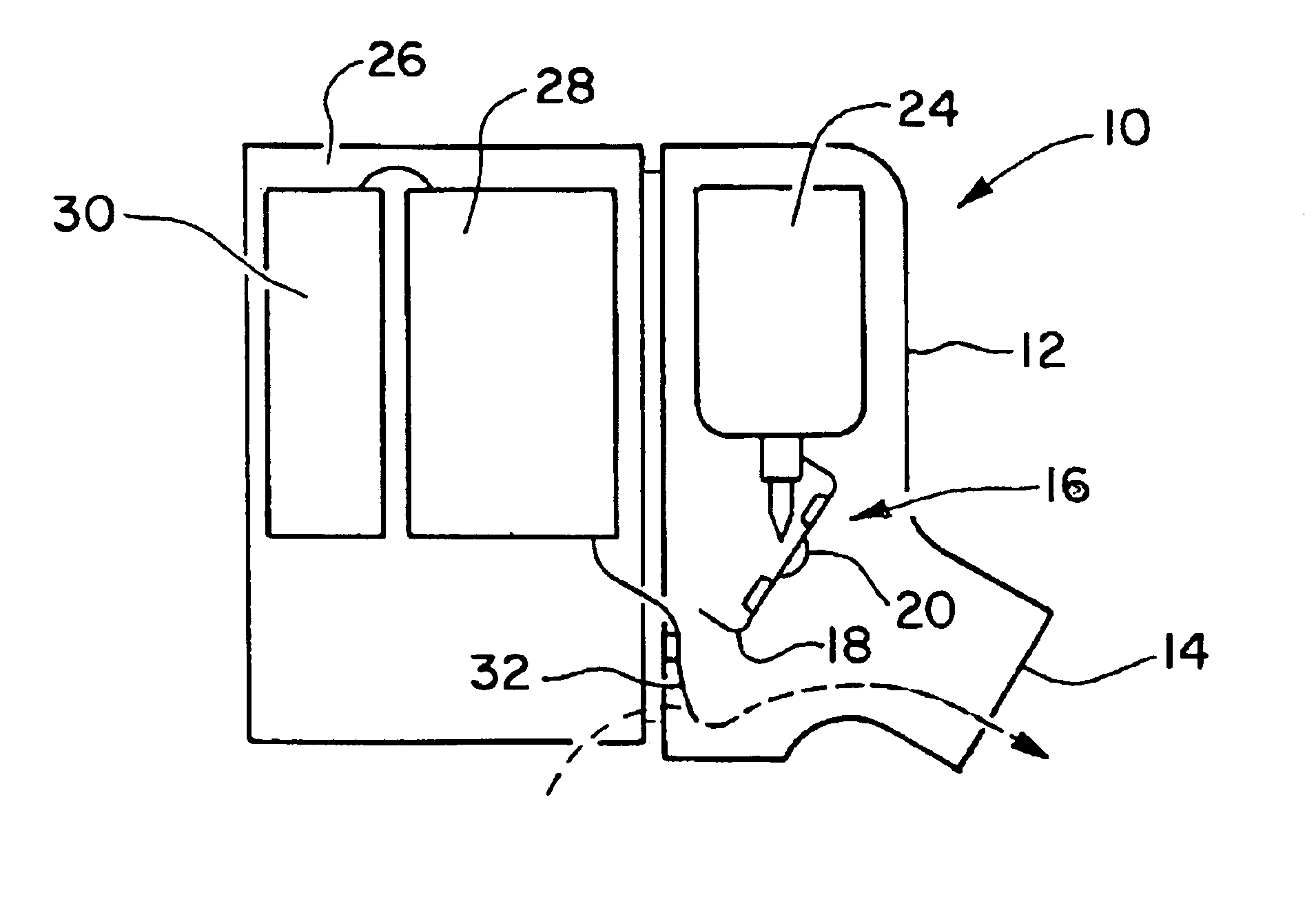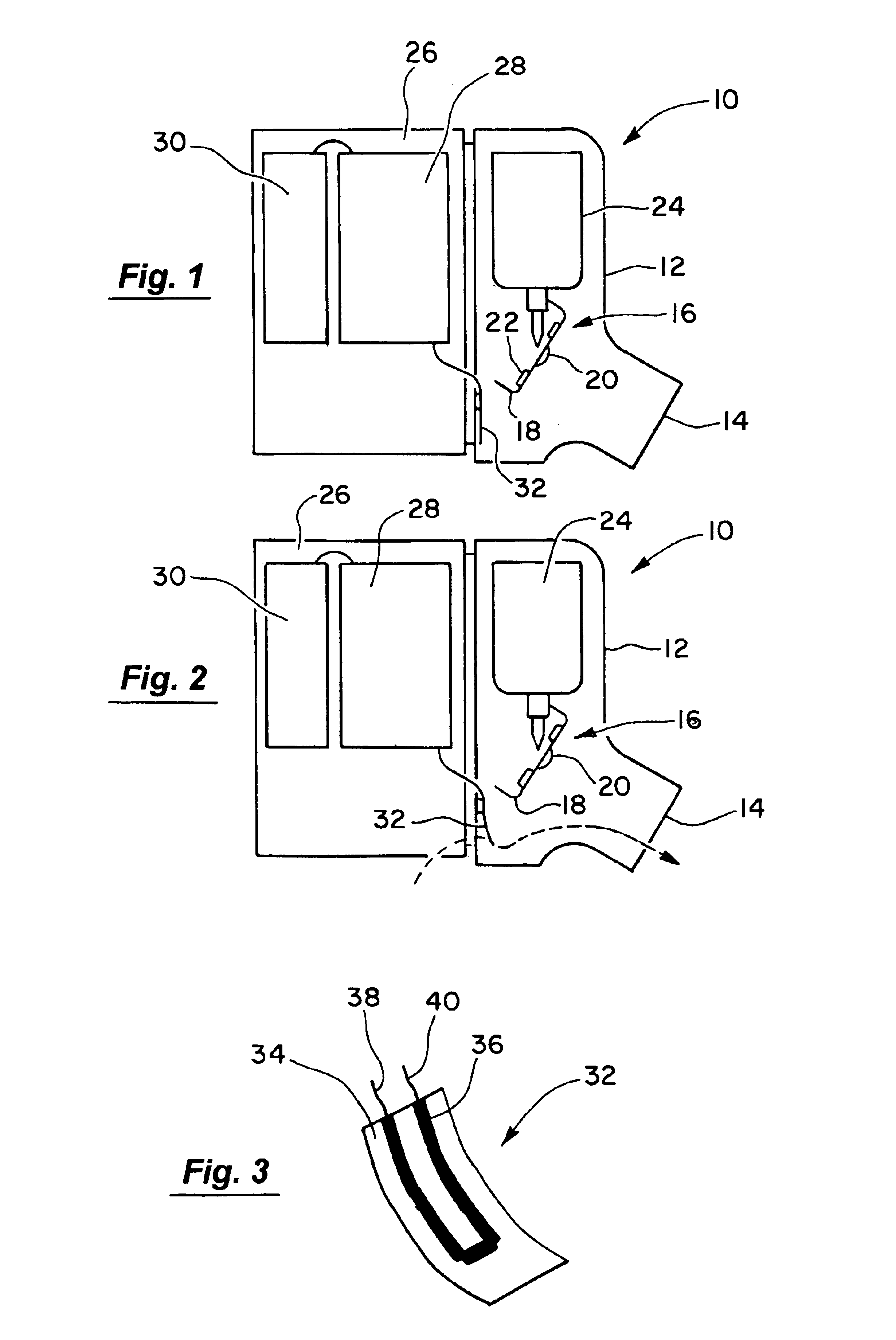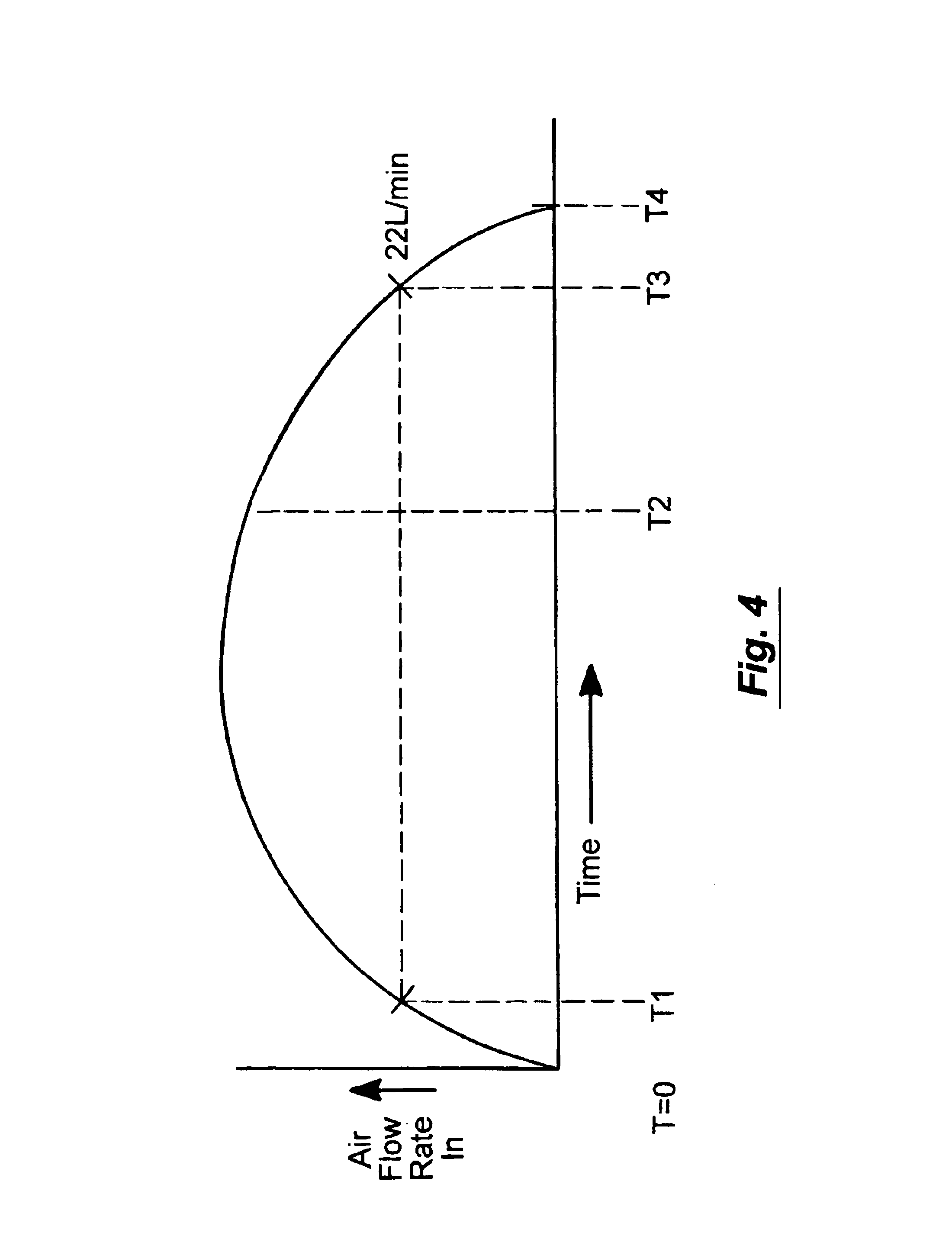Systems and methods for clearing aerosols from the effective anatomic dead space
a technology of aerosols and dead space, applied in the field of aerosolization, can solve the problems of adversely affecting the financial cost of a particular therapy, user under-medication or in the calculation of inappropriate dose amounts, and ineffectiveness, so as to reduce the amount of wasted drugs, reduce the amount of aerosol exhaled, and increase the aerosol delivery efficiency
- Summary
- Abstract
- Description
- Claims
- Application Information
AI Technical Summary
Benefits of technology
Problems solved by technology
Method used
Image
Examples
Embodiment Construction
The invention provides techniques and devices that are designed to facilitate the transfer of an aerosol to the lungs or other target regions of the respiratory tract. The techniques and devices are particularly useful in applications where an aerosol is generated on demand. This may occur, for example, when a user inhales from a mouthpiece to cause production of the aerosol. As the user continues to inhale, the aerosol is delivered to the lungs. In some cases, the last portion of the generated aerosol may not reach the lungs. This last portion of the aerosol simply fills a so-called dead space between the exit of the inhaler mouthpiece and the entrance to targeted portion of the respiratory tract, such as the lungs.
The invention provides exemplary aerosolization devices and methods for delivering an aerosol to the lungs. In one embodiment, an aerosolization device comprises a housing having a mouthpiece, an aerosol generator disposed in the housing, a flow sensor or pressure sensor...
PUM
 Login to View More
Login to View More Abstract
Description
Claims
Application Information
 Login to View More
Login to View More - R&D
- Intellectual Property
- Life Sciences
- Materials
- Tech Scout
- Unparalleled Data Quality
- Higher Quality Content
- 60% Fewer Hallucinations
Browse by: Latest US Patents, China's latest patents, Technical Efficacy Thesaurus, Application Domain, Technology Topic, Popular Technical Reports.
© 2025 PatSnap. All rights reserved.Legal|Privacy policy|Modern Slavery Act Transparency Statement|Sitemap|About US| Contact US: help@patsnap.com



